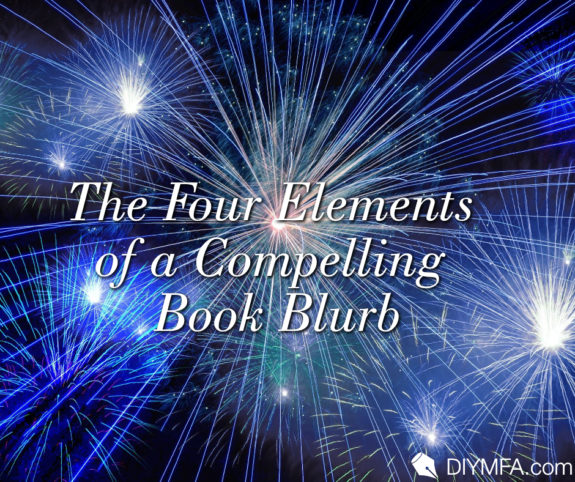Hi, writers! In my last post, I wrote about how to create a book cover that not only accurately reflects your brand but also attracts your ideal readers.
While an amazing cover can persuade readers to click on your book (or to pull it off the shelf in a physical book store), it’s your book’s description, or blurb, that will convince them to actually buy it.
In today’s column, I want to talk about writing a compelling blurb that makes clicking the “Buy Now” button (or rushing to the cash register) a no-brainer for your potential readers.
Let’s get started!
Before You Begin: Research Your Genre and Target Audience
This is such an important step and one that I feel gets overlooked a lot. Ideally, you should already be reading extensively in your chosen genre (for research purposes and also because you hopefully really enjoy reading and writing within that particular genre).
However, this research phase should include more than just reading the story. It should also include reading and analyzing the blurbs of successful books within your chosen genre.
While it can be argued that a lot of book blurbs follow a similar formula (which I discuss more below), it’s important to note that, depending on the genre of your book and target audience, expectations for your blurb will vary (sometimes drastically).
For example, some genres and audiences come to expect longer, more detailed blurbs (such as the self-help genre) while others may prefer much shorter ones. Additionally, expectations for your blurb will change depending on whether you’re writing fiction or nonfiction.
Bottom line, you should be researching and experimenting to find what works best for your genre and audience.
Okay, let’s dive into what makes a blurb successful!
The Four Elements
A good blurb or description should not just be a summary of your book (or worse: a complete description of the entire plot, including the ending).
Additionally, it shouldn’t just begin with a basic description of your setting or main characters. Instead, a blurb should hook a potential reader by compellingly describing the main conflict and/or what readers will gain by reading the book.
As a general rule of thumb, your blurb should do the following:
- Begin with a hook (usually the first two sentences of the blurb).
- Give readers a clear idea of what kind of book it is.
- Indicate what readers will gain from reading the book (also known as the payoff).
- End with a cliffhanger, question, or direct Call to Action.
Let’s take a look at a couple of examples that include all four of these elements.
Below is the blurb from Sarah J. Maas’s best-selling book, A Court of Thorns and Roses, which you can find here on Amazon.
I think this is an excellent example as it hits all of the elements listed above.
The blurb starts with a hook, a single sentence that immediately draws in a specific target audience: fans of George R.R. Martin and Kristin Cashore. The second (and a little bit of the third) paragraph gives readers a clear idea of what kind of book this is (fantasy with romantic elements). The final paragraph introduces the conflict in a compelling way and ends on a cliffhanger.
Notice how this blurb doesn’t give the entire book away. Instead, it provides just enough information to intrigue potential readers. Will Feyre succumb to her feelings for Tamlin? Will she be able to stop the shadow from spreading across the faerie lands? Based on this blurb, we aren’t sure, and so we are compelled to buy the book in order to have these questions answered for us.
Let’s take a look at another example. This time, a nonfiction book!
Below is the blurb from Master Your Emotions, a self-help book by Thibaut Meurisse, which you can find on Amazon here.
This description is much longer than the one for A Court of Thorns and Roses, however, it still includes all the elements of a successful blurb.
The hook is hard to miss, as it’s formatted using a much larger font. It’s directed at a very specific audience: people who want to learn how to overcome their negative emotions.
The body of the blurb consists of several smaller paragraphs and a bulleted list, which accomplishes a couple of different things at once: it tells the reader what the book is about and it gives a detailed overview of exactly what readers will gain from the book. It even goes a step further and gives readers an idea of how the book will teach them to master their emotions.
Instead of a more traditional “cliffhanger” at the end (which can be found in most fiction blurbs), this one ends with a direct Call to Action in a large, easy-to-read font.
Conclusion
Although the above blurbs are from two vastly different genres, I feel that they both work extremely well to entice potential readers. Specifically, they offer concise information on (1) what the author is offering and (2) why readers absolutely need to buy what they’re offering.
Again, the content and sometimes even the formatting of these descriptions will vary based on what genre you’re writing in, so it’s important that you do your own research before writing your blurb.
Get to work on those book descriptions, writers! And if you’ve read a particularly compelling blurb lately, don’t forget to share it with me in the comments!

Manuela Williams is a Reno-based writer. She is the author of Ghost In Girl Costume, which won the 2017 Hard To Swallow Chapbook Contest, and her second poetry chapbook, Witch, was published by dancing girl press & studio in 2019. When she’s not writing, Manuela is busy drinking coffee and spending time with her blind Pomeranian, Redford. You can connect with her on LinkedIn and Pinterest.







